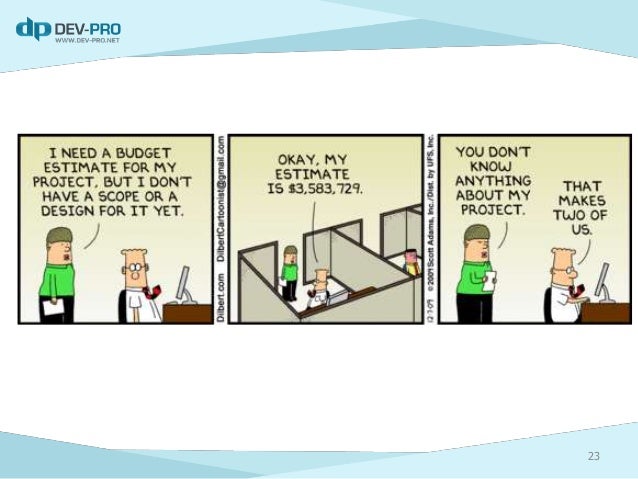
Image source: https://image.slidesharecdn.com/10reasonswhyprojectsfailorcommonmistakestoavoid-140626045644-phpapp01/95/10-reasons-why-projects-fail-or-common-mistakes-to-avoid-23-638.jpg?cb=1403758801
(This is part 2 of a series of 10 posts: Why projects fail?)
This post deals with the second of the OGC's eight causes of project failure: the lack of effective or clear senior management, ownership or leadership at higher levels within the organisation.
The PRINCE2 project management methodology recognises 4 levels of project-related management:
* Team manager (ground-level operations)
* Project manager (manages the day-to-day project decisions)
* Project board (responsible for decisions outside the project manager's scope, for example, dealing with exceptional risks or requests for change)
* Programme/corporate management (responsible for the integration of the project into the wider programme or business strategy)
The final management level actually falls outside of project management, but effective programme/corporate management is crucial for ensuring that a project makes coherent business sense.
According to the NAO report, the C-NOMIS project has been overseen by three different SROs (Senior Responsible Officers), the first of whom had very little prior experience working with large-scale IT systems projects. A further element of confusion was added by the fact that NOMS - the organisation running the project - was a recent amalgamation of HM Prisons, the National Probation Service and various other government offices and organisations, all of which came with their own management structures and their own ways of doing things.
The consequences of this confusion were as follows:
* Poor monitoring by senior management
Neither the project board nor the SRO requested or received any information about the project beyond standard summaries and briefings until mid-2007. There is no evidence during this period that senior management monitored the delivery of the product.
* No clear financial accountability
Although the project board met once every two months, the records show that there was no discussion of project finances until May 2007 - by which point the estimated cost of the project had almost tripled to 690 billion.
* Weak change control
One key reason for the increasing costs and delays was the "scope creep" allowed on the final product (the integrated database). This was partly caused by having various requirements from the different departments and no central figure of authority to ensure that the requirements were compatible, achievable and necessary to the project objectives. Scope creep can be fatal for a project in the Business Case is not regularly reviewed, as it changes the cost/benefit balance - often for the worse.
Summary and solutions
The newly-updated PRINCE2 guidance includes the release of a PRINCE2 manual aimed particularly at senior managers, who need to understand the basics of the PRINCE2 method and their PRINCE2 responsibilities. This manual is called Directing a Project, and may eventually lead to an additional qualification particular to project board members. You may learn more details about how projects should be directed by attending PRINCE2 training.
The MSP programme management methodology and certification is also an invaluable source of best-practice guidance for individuals new to senior project management roles and responsibilities.
Looking ahead ...
The lack of clear senior management, leadership and ownership on the project was a key factor in the failure of C-NOMIS. In my next post I am going to look at the third of the causes of project failure - no effective stakeholder engagement.